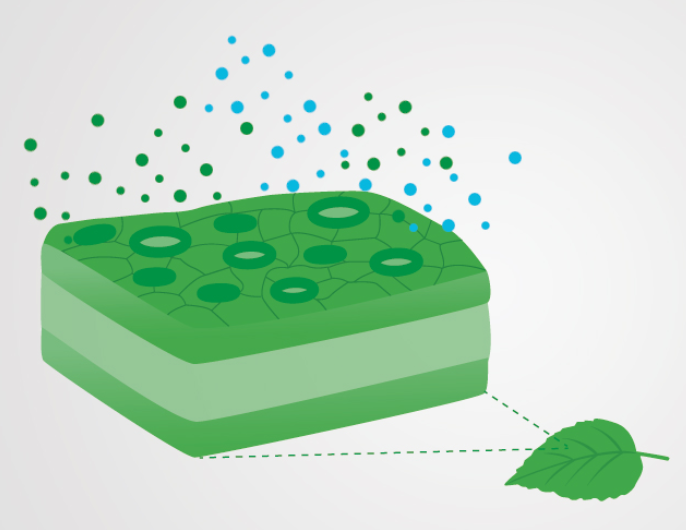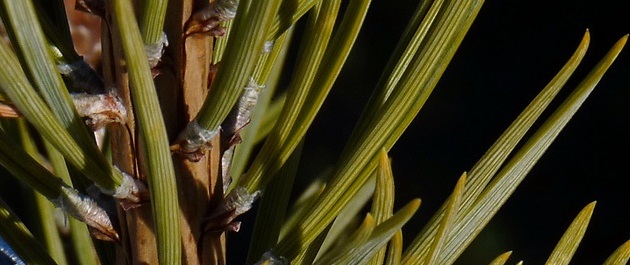Gases enter and leave the leaf through stomata, which actively control the gas exchange of CO2 and H2O, for example, between the plant and the atmosphere.
Plants need to keep the stomata as open as possible to obtain atmospheric carbon dioxide but at the same time, they need to control the loss of water via transpiration. Therefore, plants actively optimise the status of stomata to gain carbon as much as possible but not to lose too much water.
Pairs of specialized guard cells form the stomata and control the opening of the small pore in between the guard cells. Plants physiologically control the opening and closing of stomata by accumulation of solutes in the guard cells. If guard cells are swollen, the stoma is open. The movement of water out of the guard cells results in closing of stoma. Stomata react to changes in light intensity (PAR), air humidity (VPD) and soil moisture (REW), for example.
In many plants, stomata are located in the lower leaf surface, whereas conifers have stomata on both needle surfaces. A leaf can have hundreds to thousands of stomata. The stomatal density is highest in leaves developed at high light, low CO2 and moist environments. When fully open, the stomatal pore is app. 5 µm wide and 10 µm long.

